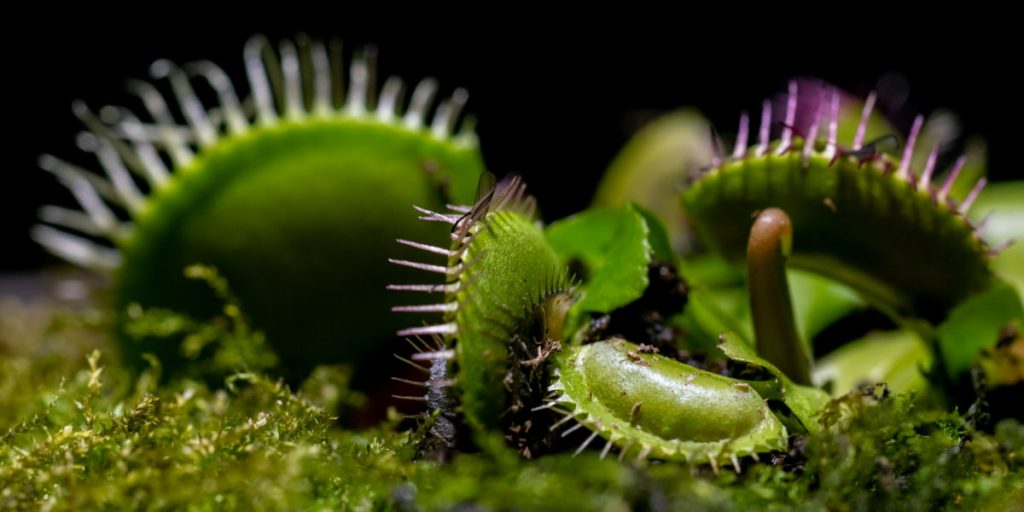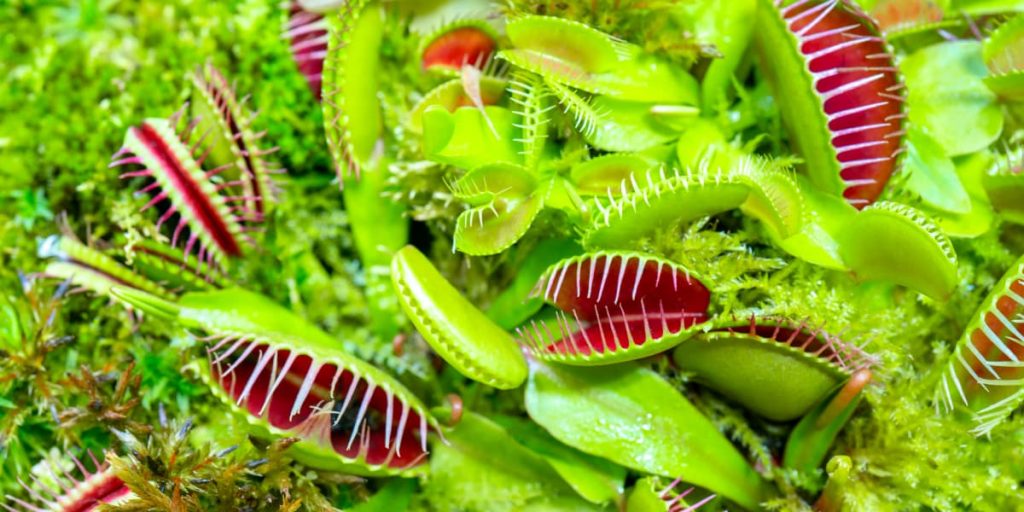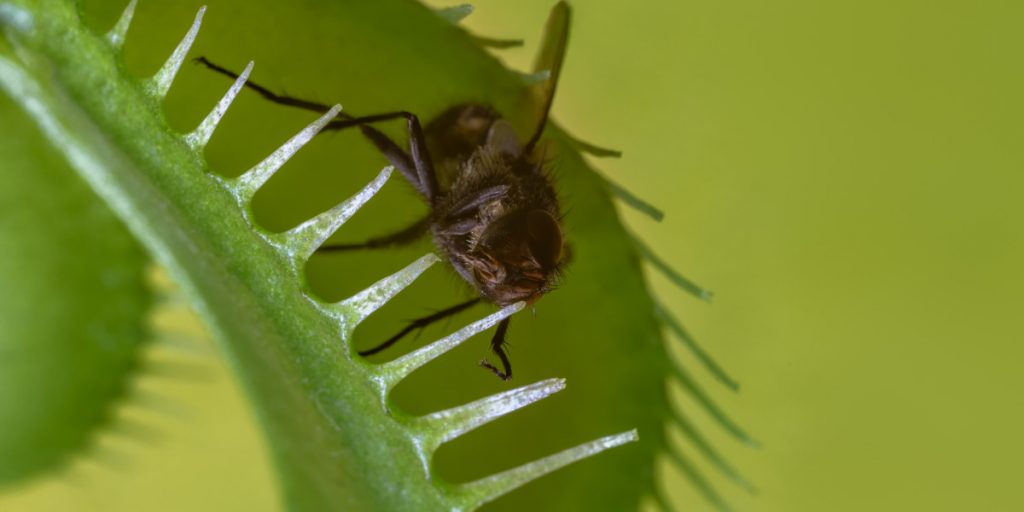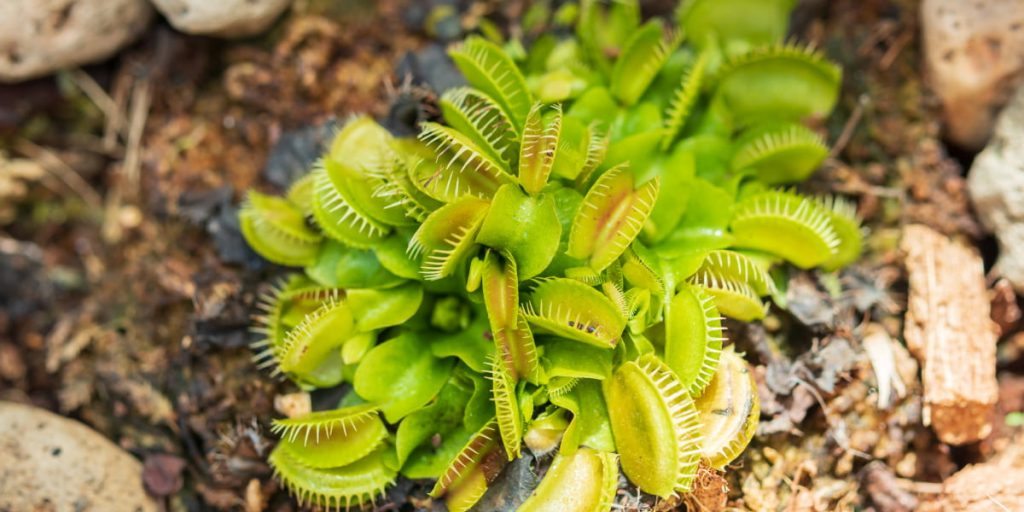Published on February 3rd, 2023
Last updated on February 3rd, 2023
How To Grow Venus Fly Traps? Planting, Caring And More

Venus fly traps (Dionaea muscipula) are carnivorous plants. They are native to the wetlands of the southeastern United States. You need to know them for their unique leaves that are modified into traps that capture and digest insects. To grow Venus fly traps:
- Choose the right location;
- Use the right soil;
- Water properly;
- Feed your plants;
- Keep the temperature warm;
- Repot your plant correctly;
- Propagate the plant;
- Be patient.
Growing Venus fly traps can be a fun and rewarding experience. But it does require some specific care to ensure that the plants thrive. From choosing the right location and soil to feeding and repotting your plants, we’ll provide you with all the information you need to grow the Venus fly trap successfully. So, whether you’re a seasoned gardener or a beginner, you’ll be able to enjoy these unique plants in your home or garden.
In this article, we will discuss everything you need to know about the Venus fly trap. We will talk about planting venus fly traps, caring and more.
How to Grow Venus Fly Traps with our Step-by-step Instructions?

First, we need to figure out how to grow this plant properly. We have prepared a series of steps you must follow. They will help you to grow Venus fly traps. So, if you’re interested in growing such a plant, here are some tips to help you get started:
- Choose the right location. Venus fly traps prefer bright, indirect sunlight and high humidity. A windowsill or terrarium with a fluorescent light is a good spot to grow the Venus fly trap.
- Use the right soil. Venus fly traps need well-draining soil that is low in nutrients. A mixture of peat moss, sand, and perlite is a good option.
- Water properly. You need to keep the Venus fly traps consistently moist but not waterlogged. Use distilled or rainwater to avoid mineral buildup in the soil.
- Feed your plants. Venus fly traps rely on insects for food. So, you’ll need to feed them small insects. Next, we will talk about feeding in more detail.
- Keep the temperature warm. Venus fly traps prefer temperatures between 70-85 degrees Fahrenheit. They can tolerate a wider range of temperatures, but they will grow best in these conditions.
- Repot your plant correctly: Venus fly traps enjoy being slightly rootbound. But they will eventually outgrow their pots. You can gently remove the plant and its root ball from the pot when this happens. Put it in a container one size up.
- Propagate the plant: Venus fly traps propagate through rhizomes, underground stems, and leaf cuttings. When the plant is dormant, you can divide it into several small plants. Pot them up in the same soil mixture as before.
- Be patient. Venus fly traps grow slowly and may take several months to a year to reach maturity. Be patient and enjoy watching your plants grow.
How to grow venus fly traps? By following these tips, you can successfully grow the Venus fly trap. Also, it will help you enjoy watching these unique plants capture and digest their prey. Remember that Venus fly traps are native to the wetlands of the southeastern United States. So, it’s best to mimic their natural environment as much as possible.
What to Feed a Venus Fly Trap?

If you want to grow a Venus fly trap, it’s important to know what to feed them to ensure they thrive. Here are some tips on what to feed your Venus fly trap:
- Feed them live insects. Venus fly traps capture and digest live insects, so this is the best type of food for them. Some good options include flies, mosquitoes, gnats, and small spiders.
- Avoid feeding them large insects or meat. Venus fly traps are not prepared to capture. Digest large insects or meat and these can damage the traps or cause the plant to rot.
- Feed them regularly. Venus fly traps need a steady supply of food to stay healthy, so it’s important to feed them regularly. A good rule of thumb is to feed them once a week.
- Use tweezers to feed. Venus fly trap traps are delicate; you can damage them if they force open. So, it’s best to use tweezers or chopsticks to place the food inside the trap.
- Don’t overfeed. Venus fly traps only need a small amount of food per week. Overfeeding when caring for a venus fly trap can lead to a buildup of excess nutrients in the soil, which can cause the plant to rot.
- Feed only when the plant is actively growing. Venus fly traps go dormant during the winter, and you do not need to feed them.
- Fertilize. The Venus fly trap also benefits from a balanced fertilizer. The ideal fertilizer for Venus fly traps is a 2-7-7 NPK fertilizer. It is high in potassium and low in phosphorus and nitrogen.
- Provide a source of water. Venus fly traps require a high-humidity environment. So make sure to keep the soil consistently moist but not waterlogged. Use distilled or rainwater to avoid mineral buildup in the soil.
Some Tips on How to Care For Venus Fly Traps

In this block of the article, we want to give you some tips to help you care for Venus fly traps:
- Monitor for pests and diseases. Venus fly traps are relatively hardy plants. But they can be vulnerable to pests such as spider mites and mealybugs. Keep an eye out for signs of infestation and treat them immediately.
- Allow the traps to close naturally: Venus fly trap traps are delicate. If you force them open, you can damage them. So, avoid poking or prodding the traps, and let them close naturally.
- Keep an eye on temperature: Venus fly traps prefer a warm, humid environment, so it’s important to keep them in a spot where the temperature stays between 60-90°F.
- Provide proper drainage. Venus fly traps need well-drained soil. So make sure the pot has drainage holes and mix soil and sand to achieve this.
We discussed the following tips for successfully caring for the Venus fly trap and how to grow venus fly traps. It can seem like an unusual flower. But it can also be a good decoration for your interior. Our recommendations will help you avoid many mistakes. Use our tips and rules, and you will be able to grow Venus fly traps right in your home.
FAQ
What are the ideal conditions for growing Venus flytraps?
Venus flytraps prefer a humid environment with bright, indirect sunlight and well-draining soil. You should grow them in a container with a mixture of peat moss, sand, and perlite. And also, you should keep them consistently moist but not flood them.
How often should I feed my Venus flytrap?
Venus flytraps are carnivorous plants, so you need to feed them with insects to survive. It is recommended to feed them small insects, such as flies or small spiders, about once a week. It is also important not to overfeed the plant, as this can lead to health problems.
Can Venus flytraps be grown indoors?
Yes, you need to grow Venus flytraps indoors as long as they receive bright, indirect sunlight. Keep them in a humid environment. It is also important to make sure the temperature does not drop below freezing, as this can damage the plant.
How do I know when my Venus flytrap needs to be repotted?
Venus flytraps should be repotted when they have outgrown their current container or when the soil has become too compacted. It is recommended to repot the plant in the spring, using a well-draining soil mixture and a container with drainage holes.


